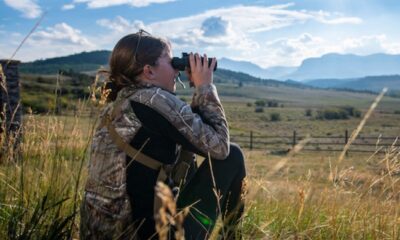Adventure
Could It Be This Simple? Hen Houses for Duck Defense

Dear Autocorrect: Just this one time, I really do mean “duck.”
Delta Waterfowl’s Hen House program began 33 years ago, on the Canadian prairie, when the conservation picture looked very different.
That initial experiment turned into a theory, and then turned into scientifically supported best practice: The key to making more ducks is giving them a better place to nest. Could it really be as simple as some sturdy chicken wire curled into a cylinder? If what you’re trying to do is keep predators away from nesting hens, then it seems the answer is … yes.
Here’s how it works: Hen Houses are placed strategically, focusing on areas that attract high densities of nesting ducks, but where grassland nesting cover is relatively scarce. In some intensely farmed areas of the key prairie pothole region, predators such as raccoons, skunks, and other animals take a heavy toll on duck nests. Hen Houses put nesting hens and their eggs out of reach of would-be nest raiders, giving the ducks a much better chance to hatch a nest. Research has shown that mallard hens using a Hen House are up to 12 times more likely to hatch a nest than hens that nest in nearby grass.
Delta Waterfowl’s ever-growing team of 30 Hen House delivery specialists is expected to install 2,218 new nesting structures during the next couple months, while also performing annual maintenance on the existing fleet of 10,775 duck-producing houses. With the latest additions, Delta’s Hen House Program will have nearly 13,000 nest structures in place for the 2024 nesting season in key breeding areas for mallards, including Alberta, Saskatchewan, Manitoba, Ontario, North Dakota, South Dakota, Minnesota, Iowa, Pennsylvania, and Colorado.
“We’re setting another Delta program record this winter by adding 2,218 new Hen Houses,” said Matt Chouinard, waterfowl programs director for Delta Waterfowl. “It’s exciting. Our Hen House program growth is expanding duck production capacity across the U.S. and Canadian prairies.”
Delta’s Hen House expansion this winter includes 678 new structures in Saskatchewan, 450 in Manitoba, 400 in Alberta, 390 in South Dakota, and 300 in North Dakota. Delta received grants from North Dakota Outdoor Heritage Fund, Wildlife Habitat Canada, the Manitoba Conservation Trust, and the Manitoba Fish and Wildlife Enhancement Fund. In addition, the new structures are funded by major gifts from donors Jim Richardson and John S. Dale.
Want to learn more about the Hen House project? Click here for more information!
-

 Hiking & Climbing1 week ago
Hiking & Climbing1 week agoWhen Bears Bring the Drama: A Tail—or Should I Say “Tale”?
-

 Adventure1 month ago
Adventure1 month agoREACTION: Trump’s Make America Beautiful Again Agenda
-

 Gear2 months ago
Gear2 months agoLet Freedom RING! Primary Arms’ Independence Day Category Sale Starts NOW
-

 Adventure2 months ago
Adventure2 months agoU.S. Bighorn Sheep Going Home to Canada
-

 Fishing4 weeks ago
Fishing4 weeks agoMy Wacky Bush Brings All the Bass to the Yard
-

 Camping & Survival2 days ago
Camping & Survival2 days agoField Dressing 101: Knowing When It’s Their Turn
-

 Adventure3 weeks ago
Adventure3 weeks agoNo Ivy Required: University of Montana’s New Center for Hunting and Conservation
